What are the 4 different data types in Python?
What are the 4 different data types in Python?
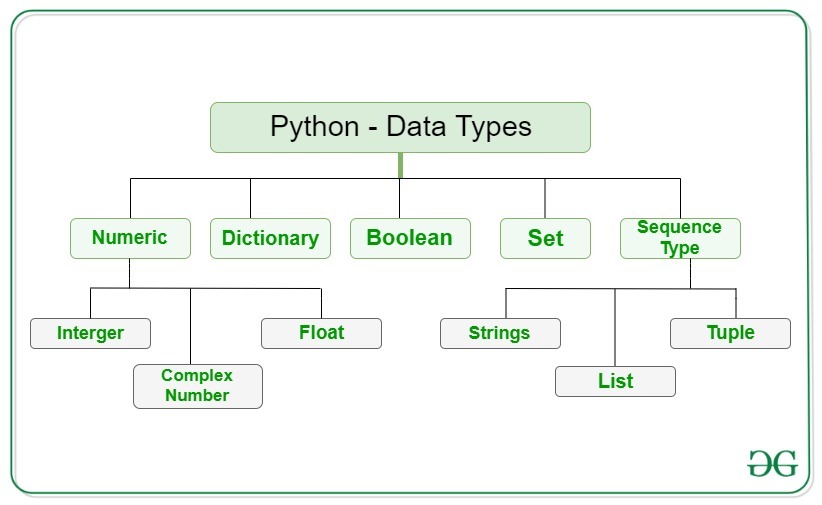
I'd be happy to explain the four main data types in Python!
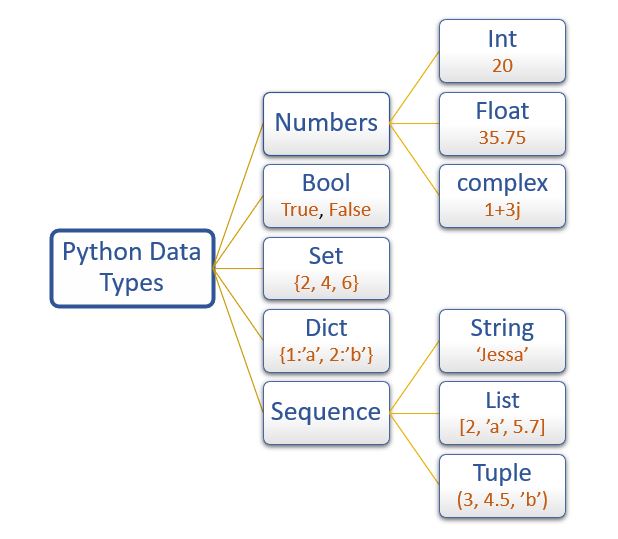
In programming, a data type is the classification of an object based on its characteristics and properties. In other words, it determines what kind of value a variable can hold. In Python, there are four primary data types: integers, floats, strings, and booleans.
Integers (int): This data type represents whole numbers, either positive, negative, or zero. For example: 5, -3, or 0. Integers can be used to represent quantities that have no decimal places. Python's int data type has an unlimited range of values, allowing you to work with even the largest and smallest integers.Example: x = 5 is an integer variable.
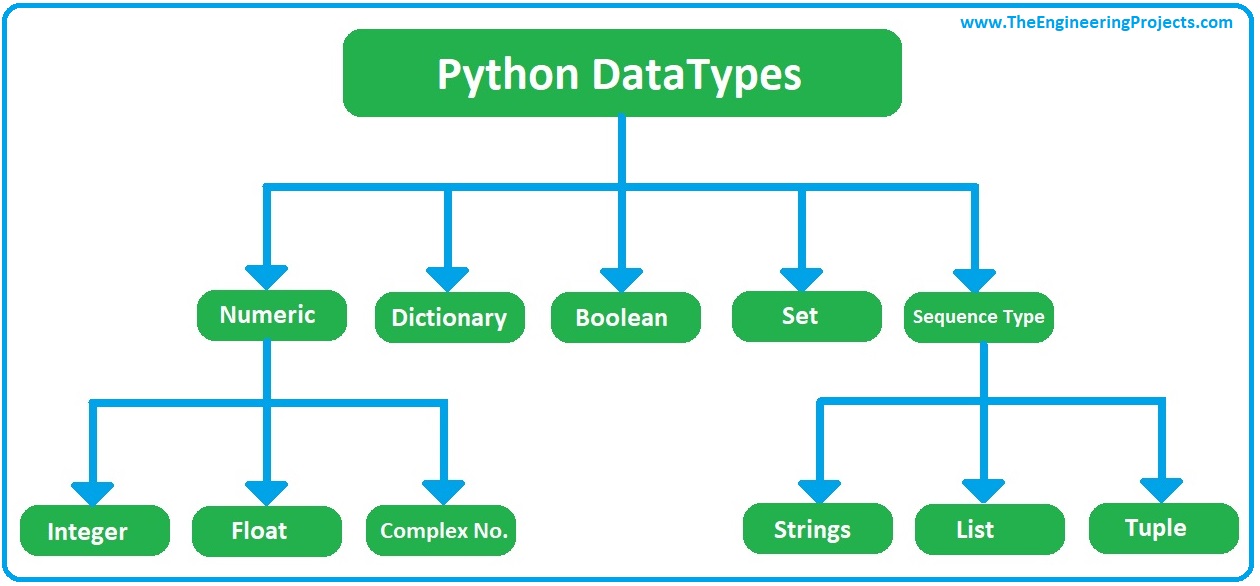
Example: y = 3.14 is a floating-point number variable.
Example: name = "John Doe" is a string variable.
Example: is_admin = True is a boolean variable.
In addition to these four primary data types, Python also has several other built-in data types:
Complex numbers (complex): Represented using real and imaginary parts. Lists (list): Ordered collections of values, allowing for dynamic length and mutability. Tuples (tuple): Similar to lists but immutable (once defined). Dictionaries (dict): Unordered collections of key-value pairs (key-value associations). Sets (set): Unordered collections of unique elements.When working with data types in Python, understanding their characteristics and limitations is crucial for writing efficient and accurate code.
What are the data types in class Python?

In Python, there are several built-in data types that can be used to store and manipulate different types of data. These data types are:
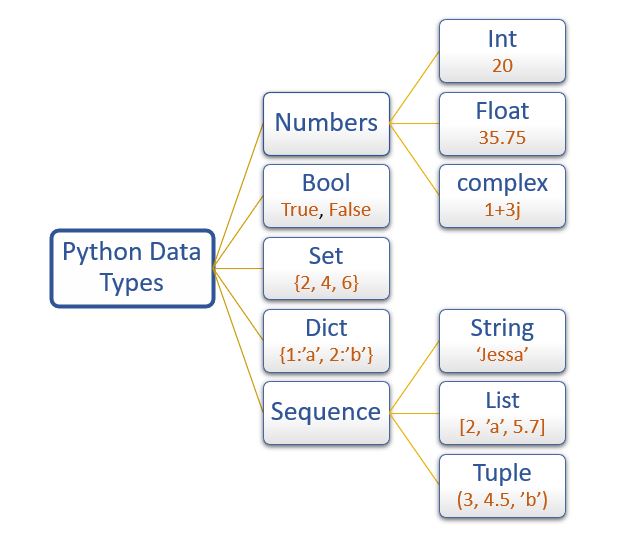
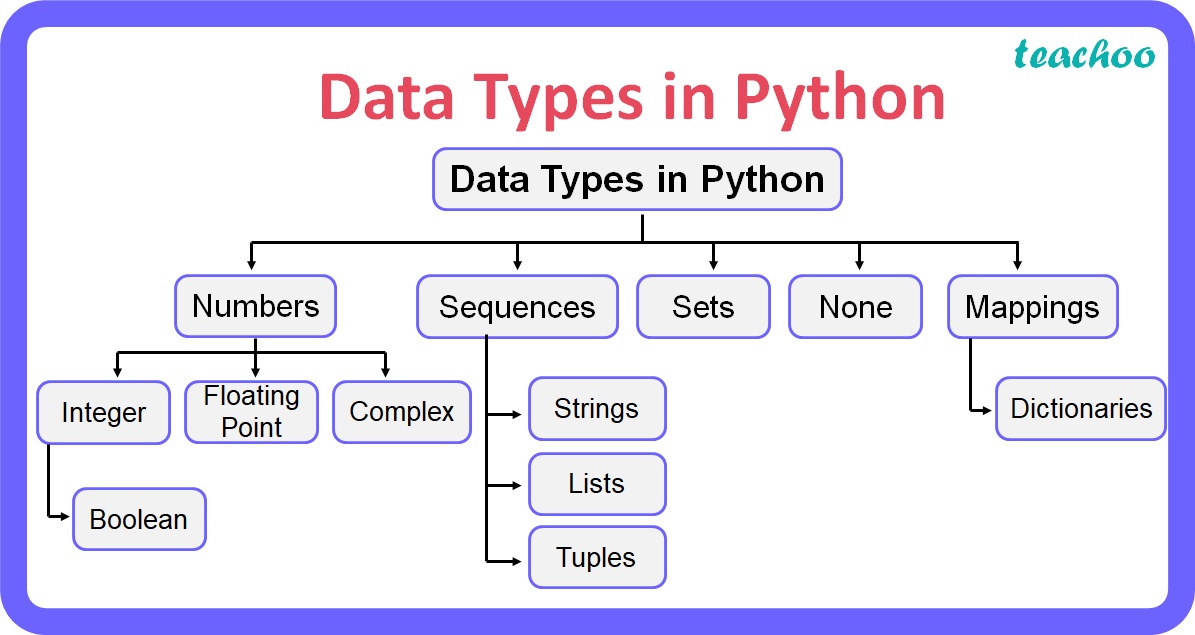
Example:
a = 5
print(type(a)) # Output: <class 'int'>
Floats (float): Decimal numbers. These can be used to represent fractional values.Example:
b = 3.14
print(type(b)) # Output: <class 'float'>
Complex Numbers (complex): Numbers with both real and imaginary parts.Example:
c = complex(3, 4)
print(type(c)) # Output: <class 'complex'>
Strings (str): Sequences of characters, such as words or sentences. Strings can be enclosed in single quotes (' ') or double quotes (" ") .Example:
s1 = 'Hello'
s2 = "World"
print(type(s1)) # Output: <class 'str'>
print(type(s2)) # Output: <class 'str'>
Boolean Values (bool): Logical values that can be either True or False.Example:
t = True
f = False
print(type(t)) # Output: <class 'bool'>
print(type(f)) # Output: <class 'bool'>
List: A collection of items that can be of any data type, including strings, integers, floats, and other lists.Example:
list1 = [1, 2, 3]
list2 = ["apple", "banana"]
print(type(list1)) # Output: <class 'list'>
print(type(list2)) # Output: <class 'list'>
Tuple: A collection of items that can be of any data type, including strings, integers, floats, and other tuples.Example:
tuple1 = (1, 2, 3)
tuple2 = ("apple", "banana")
print(type(tuple1)) # Output: <class 'tuple'>
print(type(tuple2)) # Output: <class 'tuple'>
Set: A collection of unique items that can be of any data type.Example:
set1 = {1, 2, 3}
set2 = {"apple", "banana"}
print(type(set1)) # Output: <class 'set'>
print(type(set2)) # Output: <class 'set'>
Dictionary: A collection of key-value pairs that can be used to store and manipulate data.Example:
dictionary = {"name": "John", "age": 25}
print(type(dictionary)) # Output: <class 'dict'>
None: A special value that can be used to represent the absence of a value.Example:
none_value = None
print(type(none_value)) # Output: <class 'NoneType'>





























